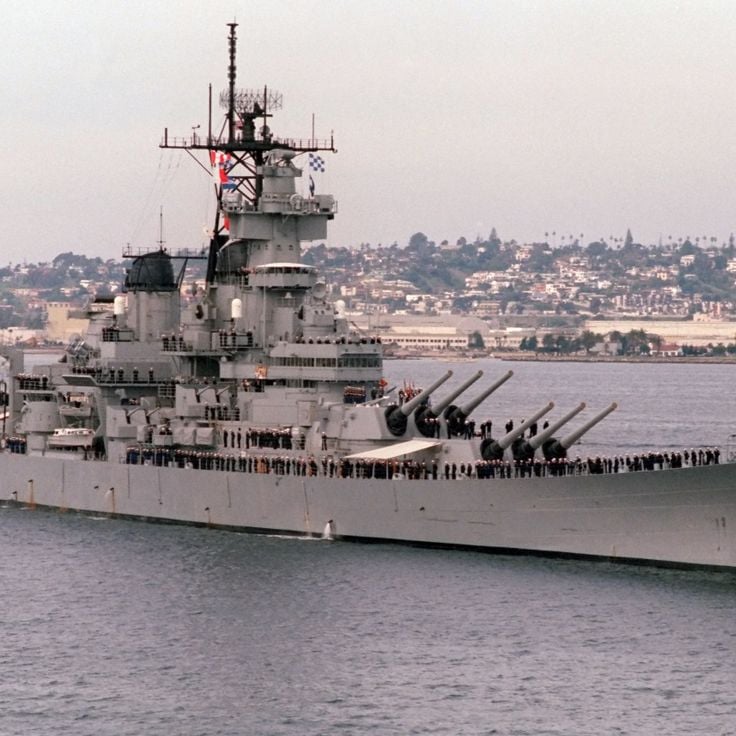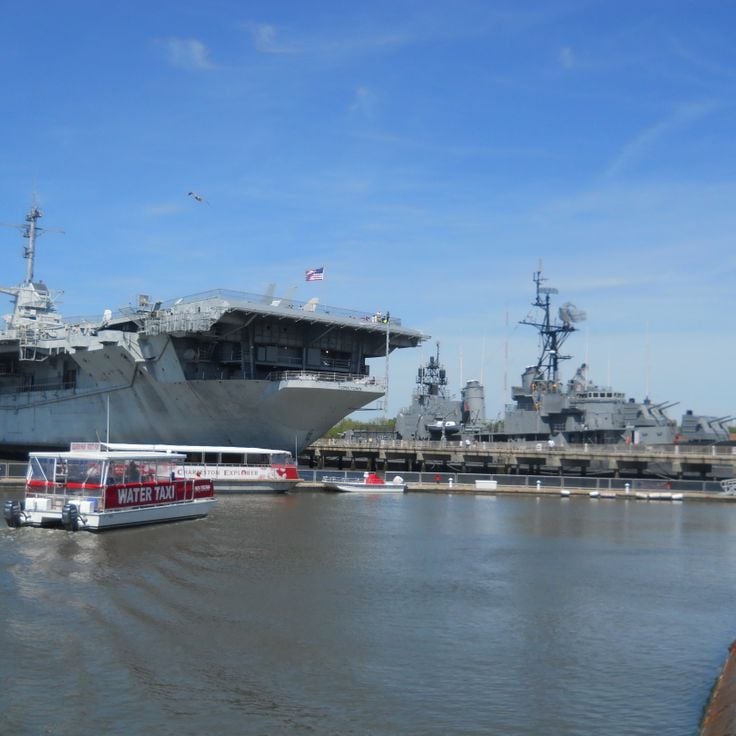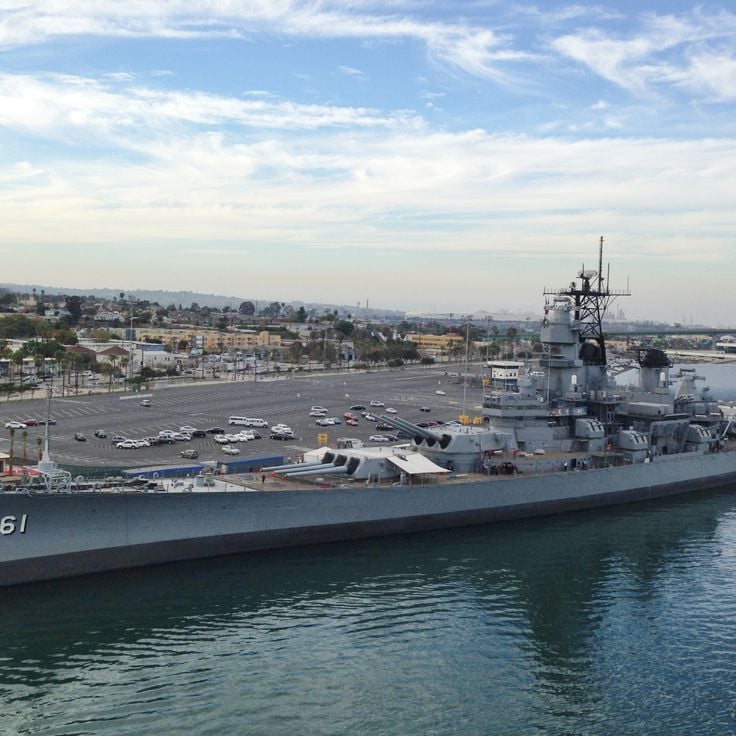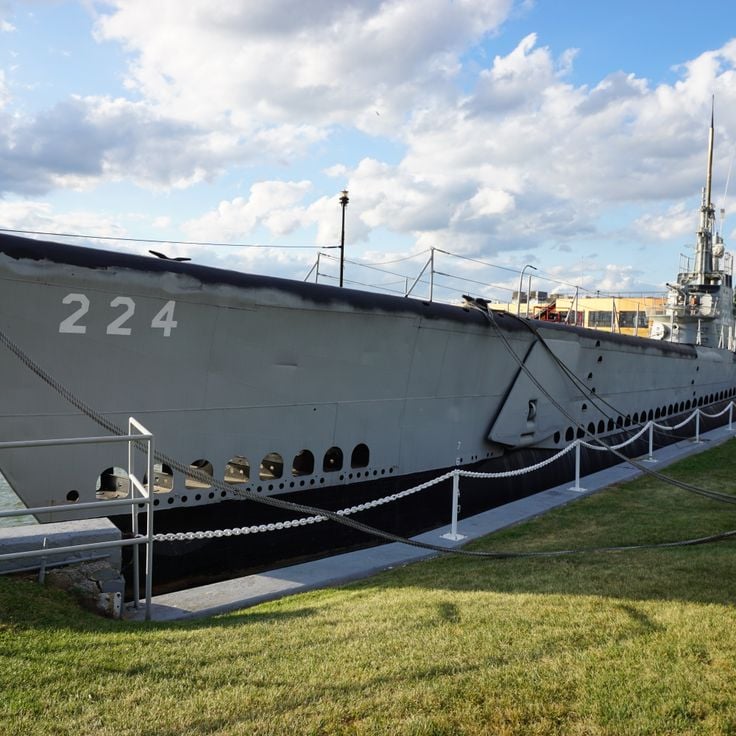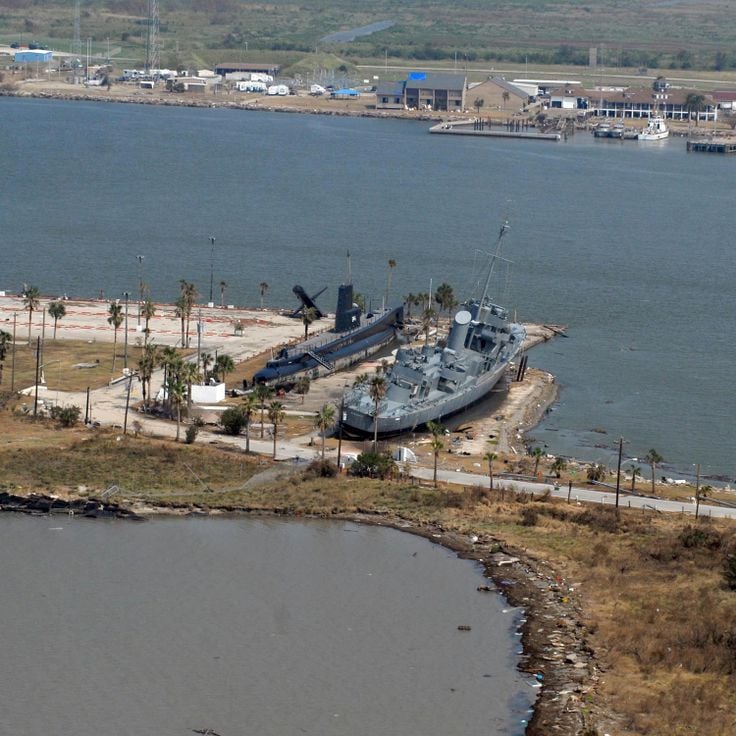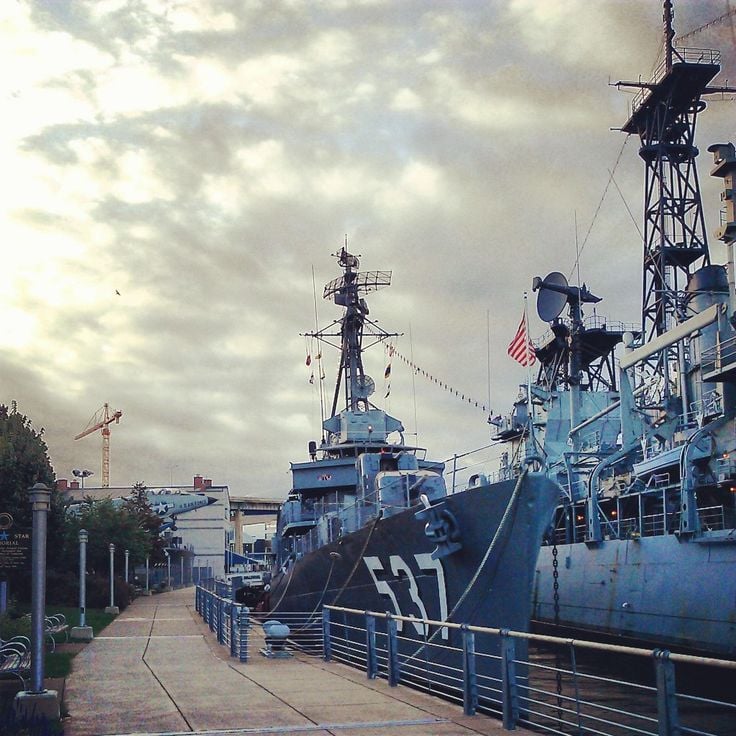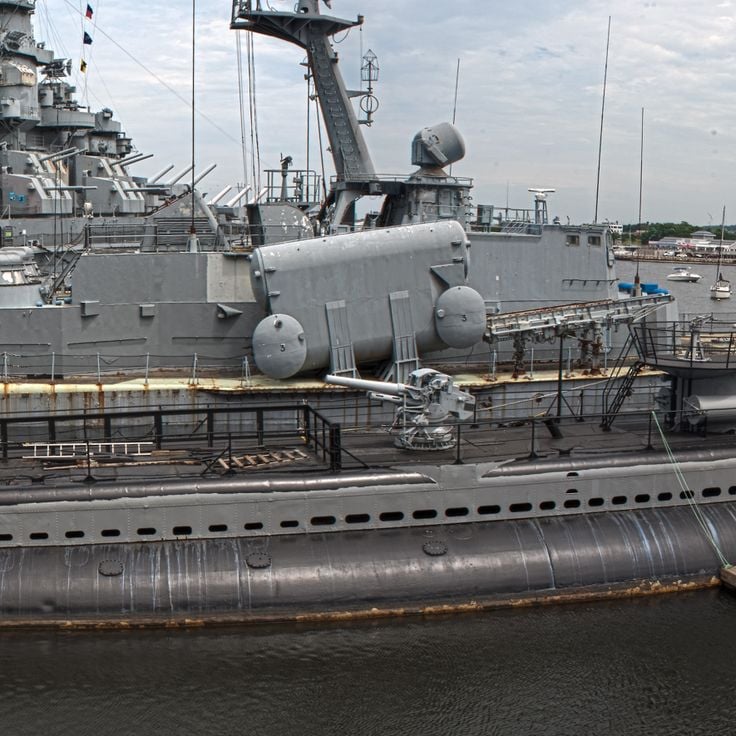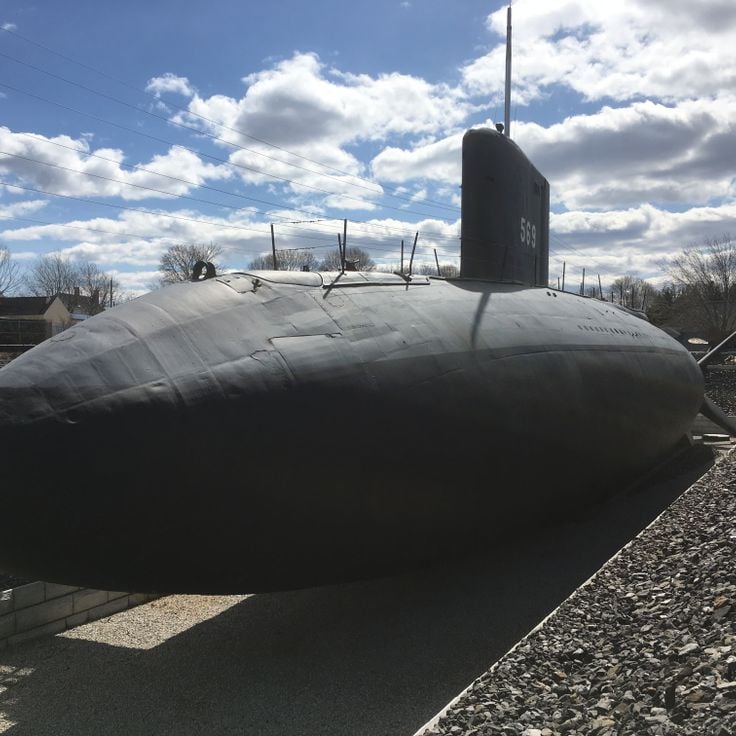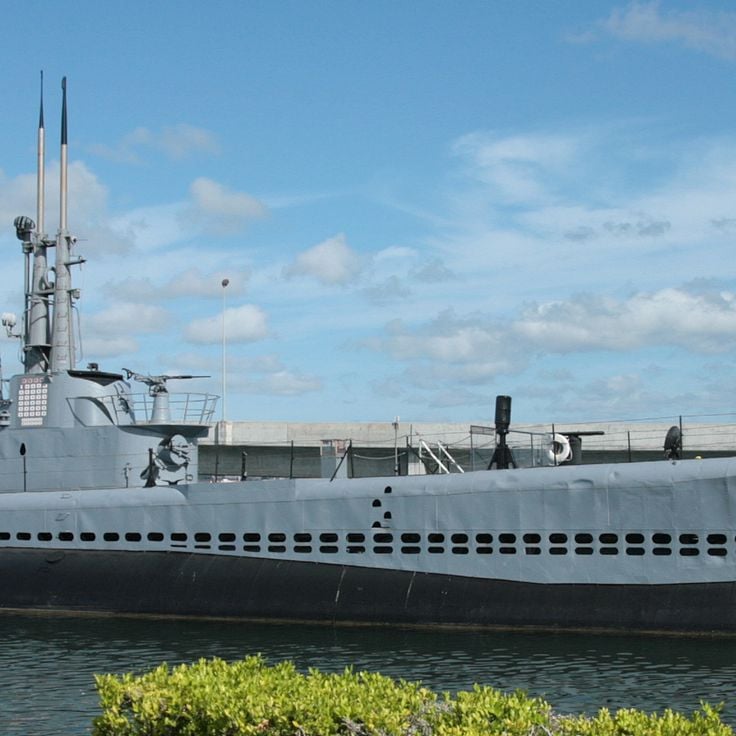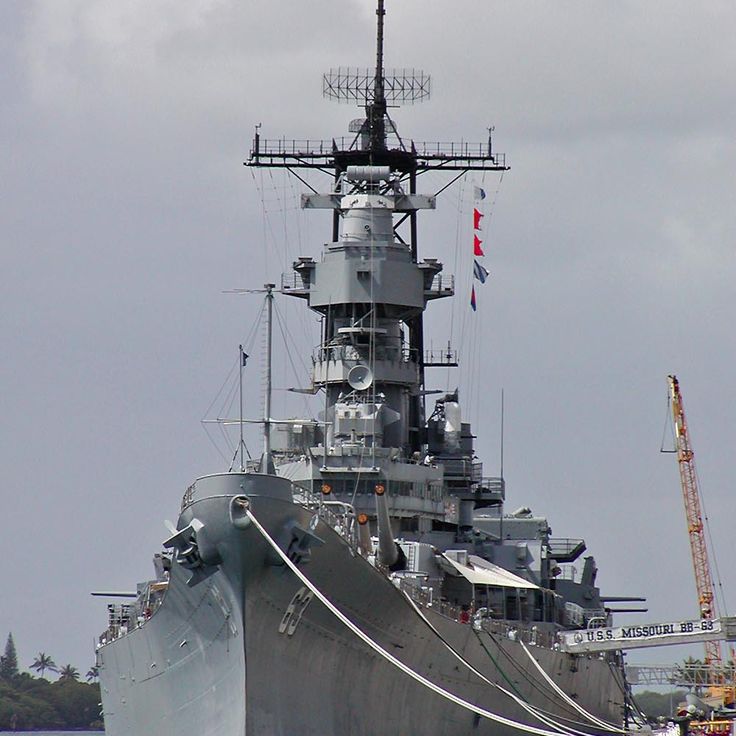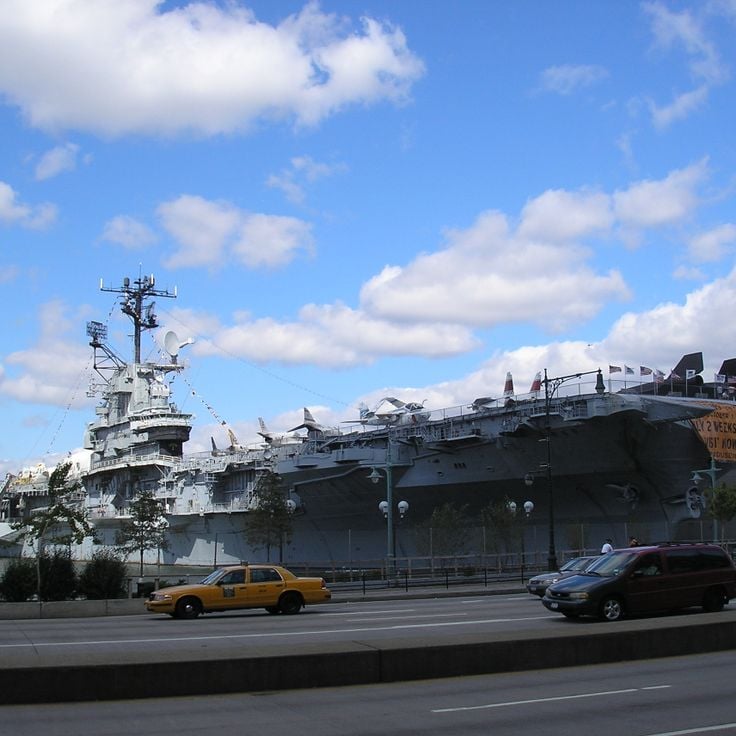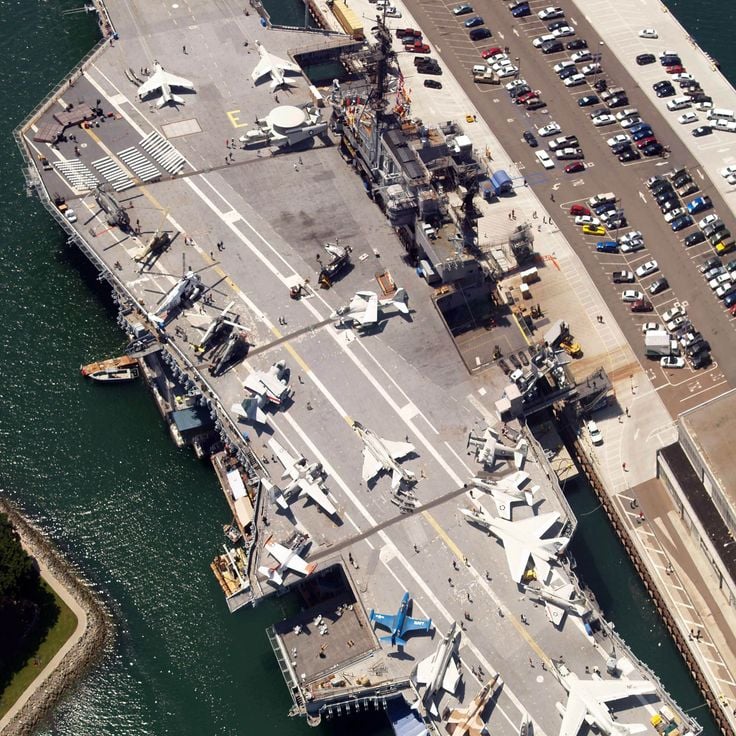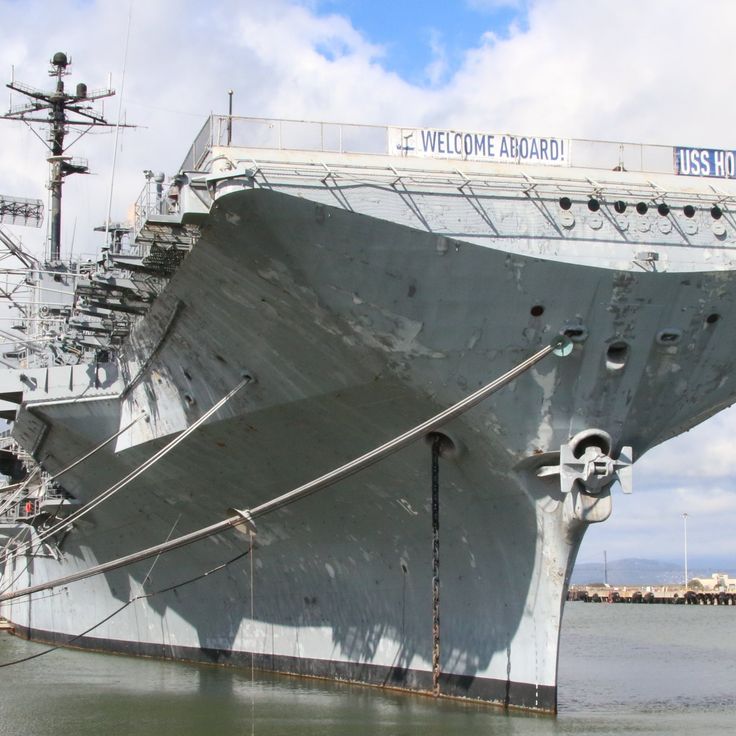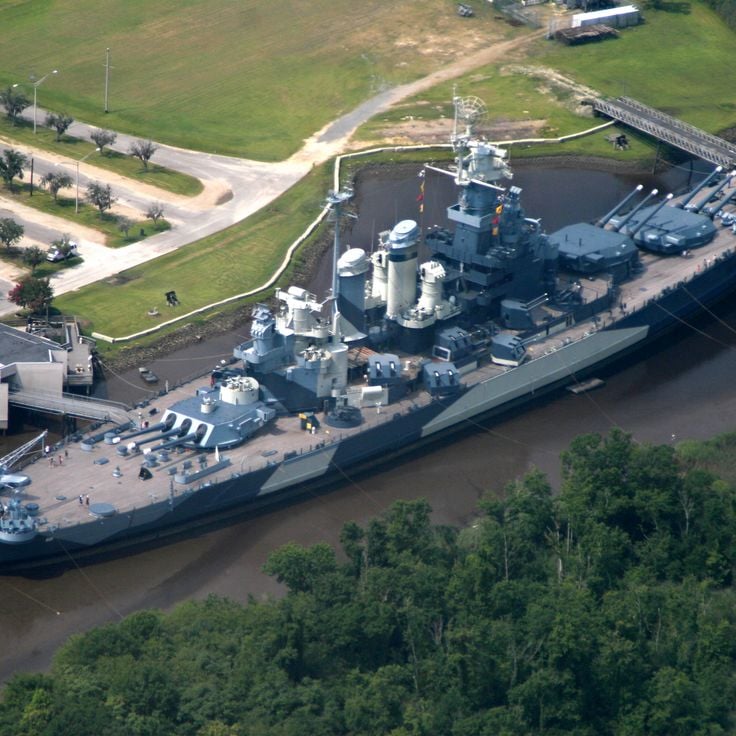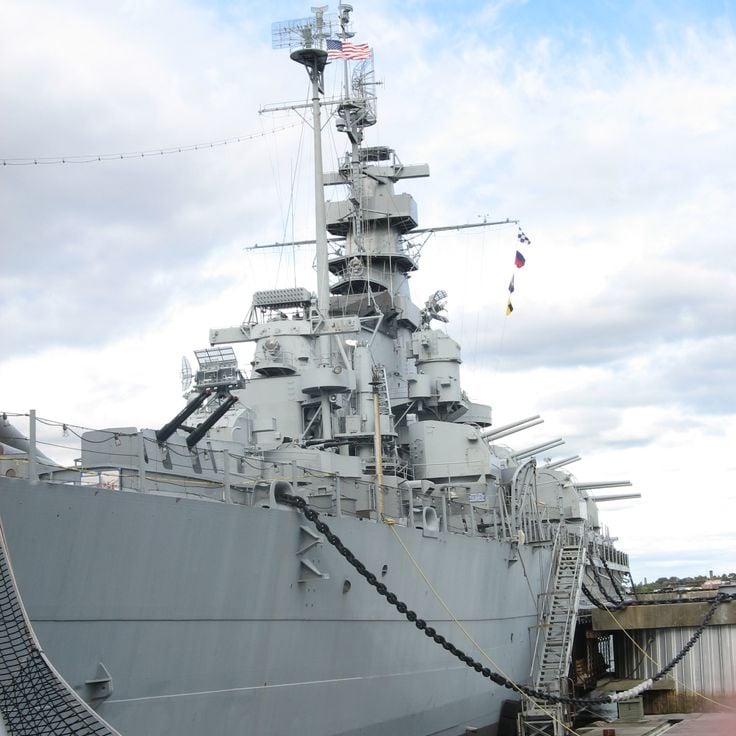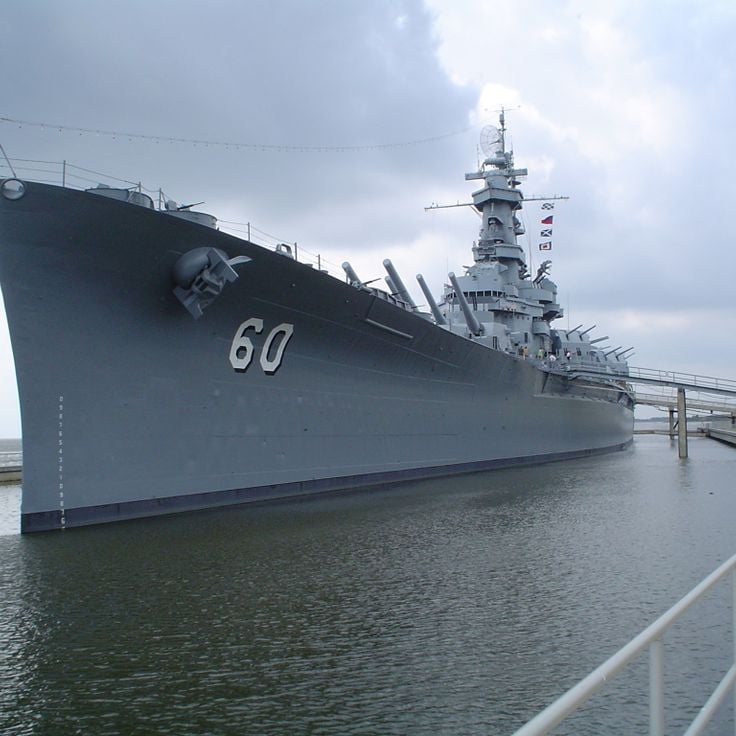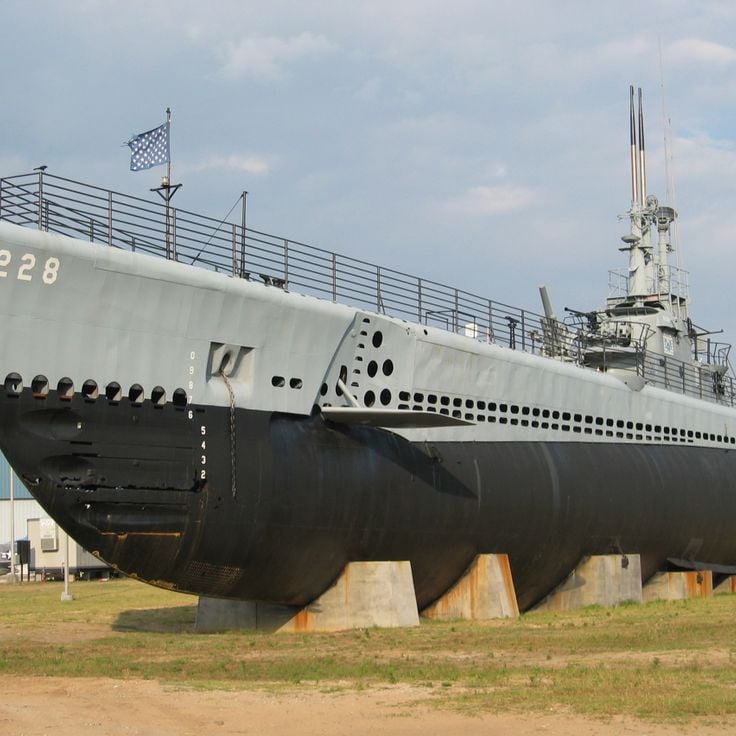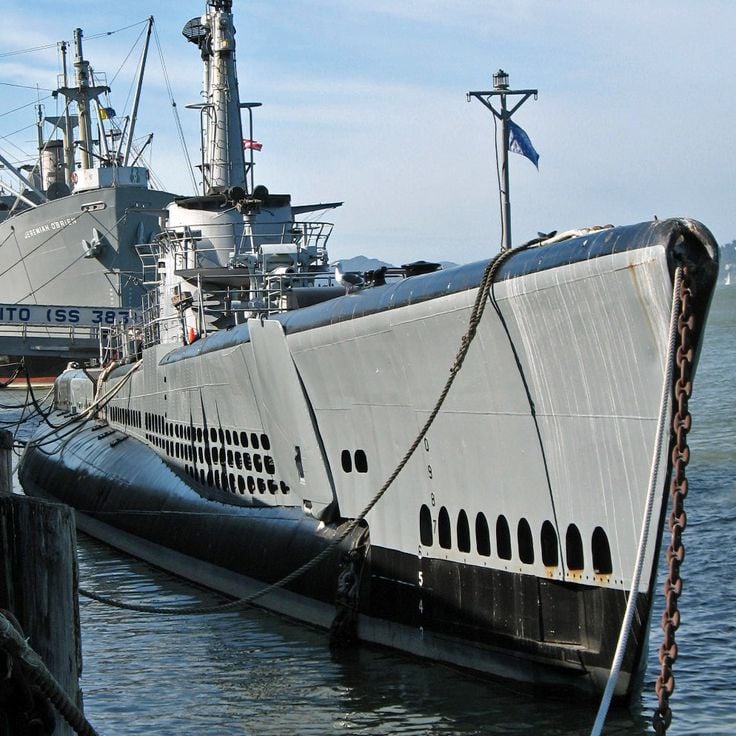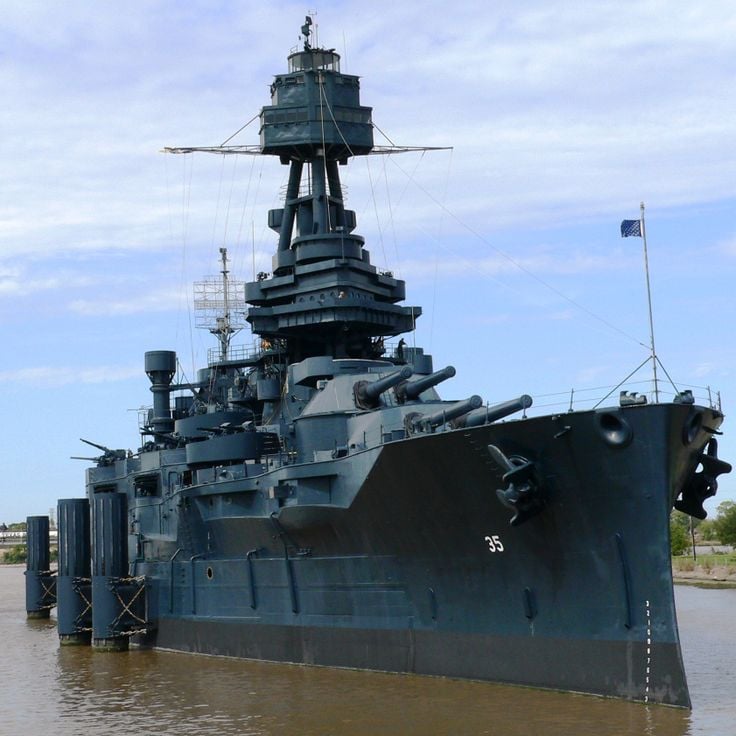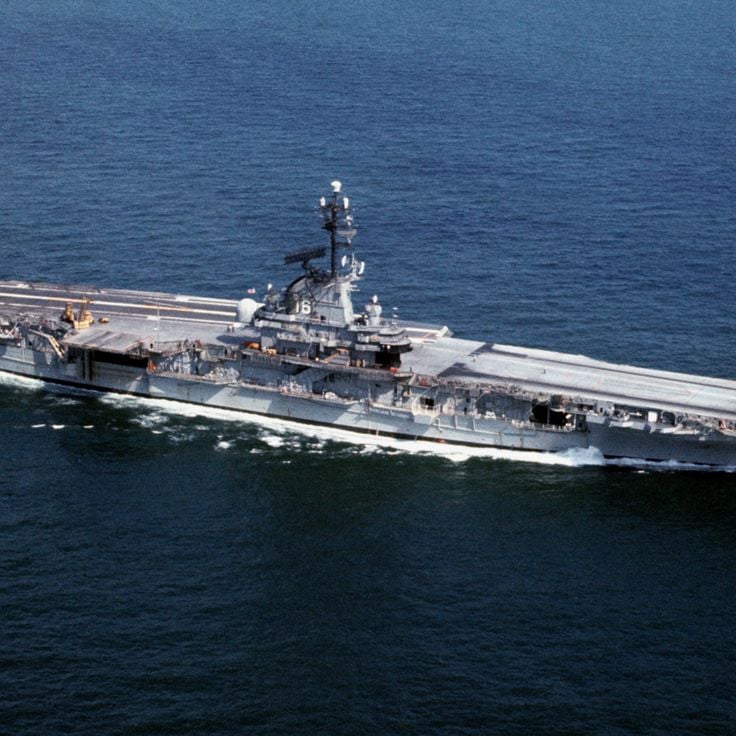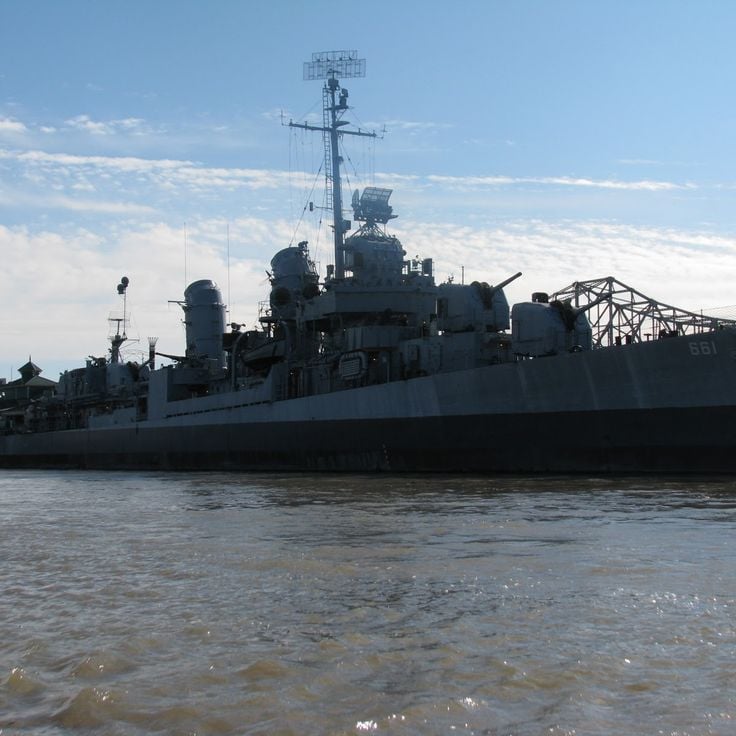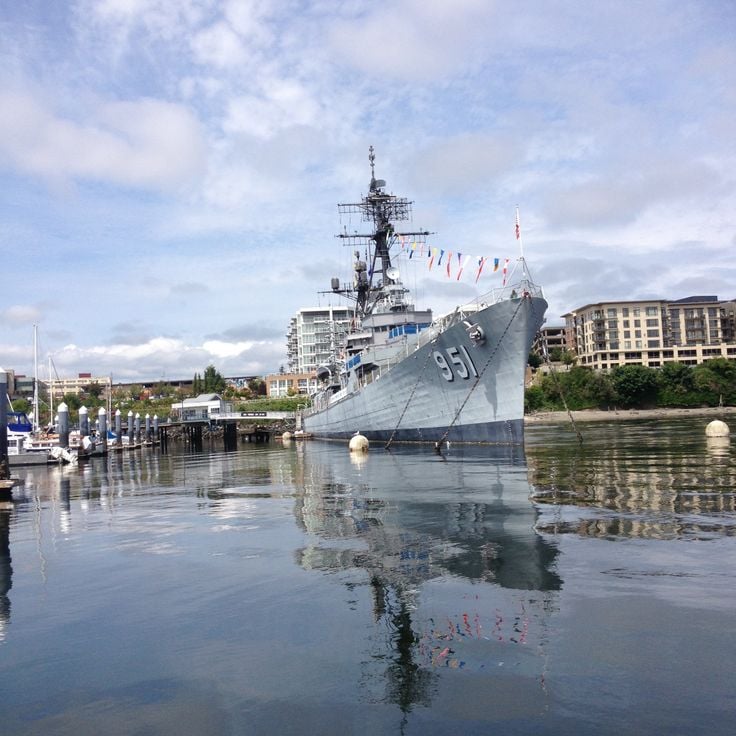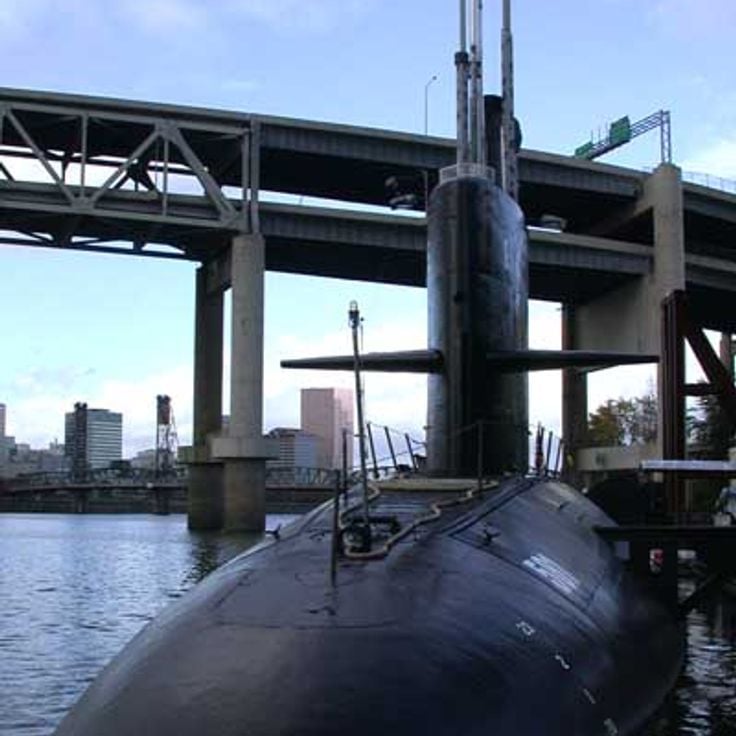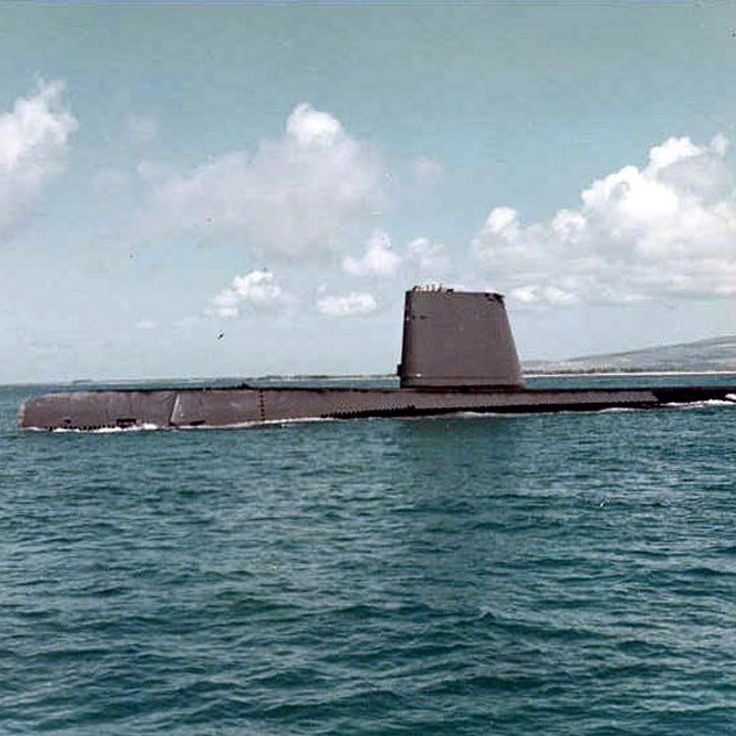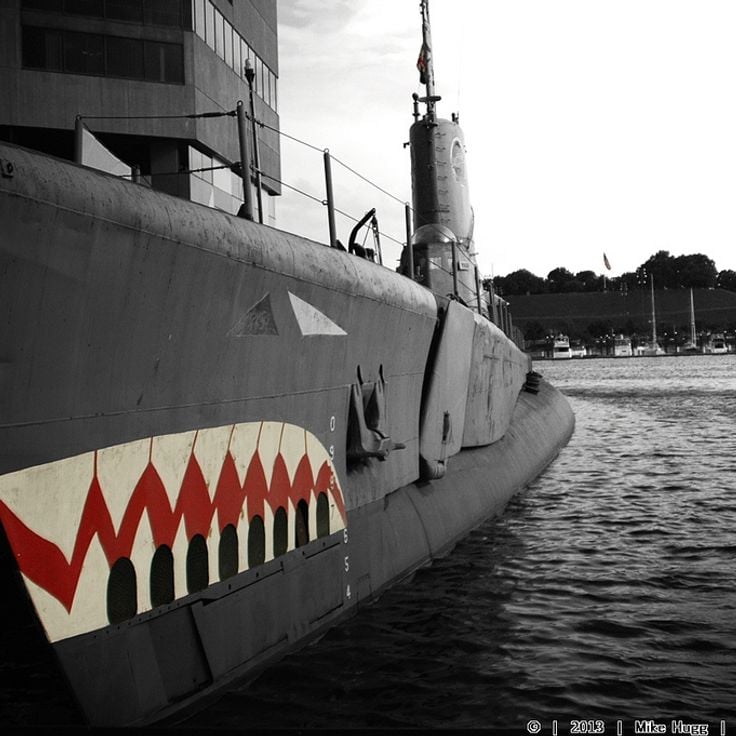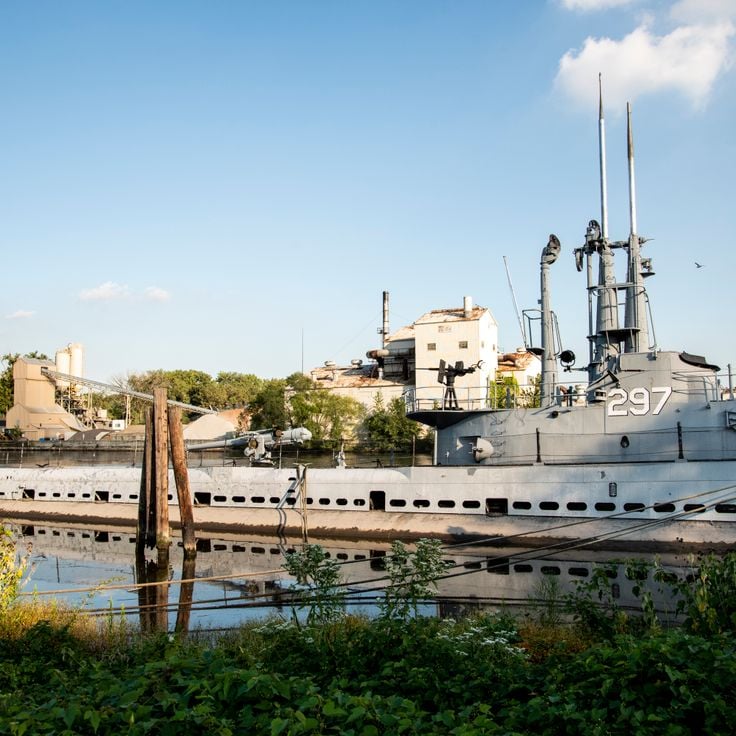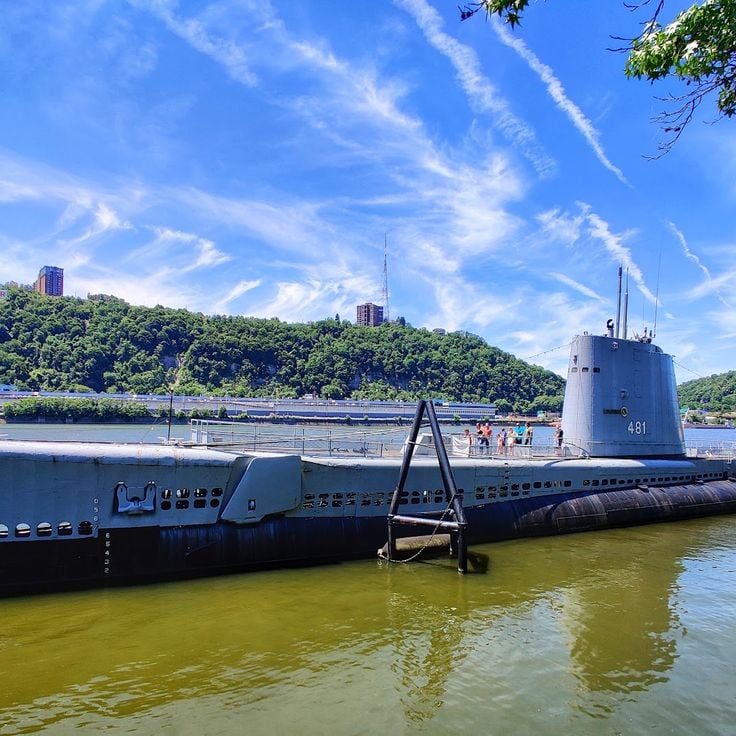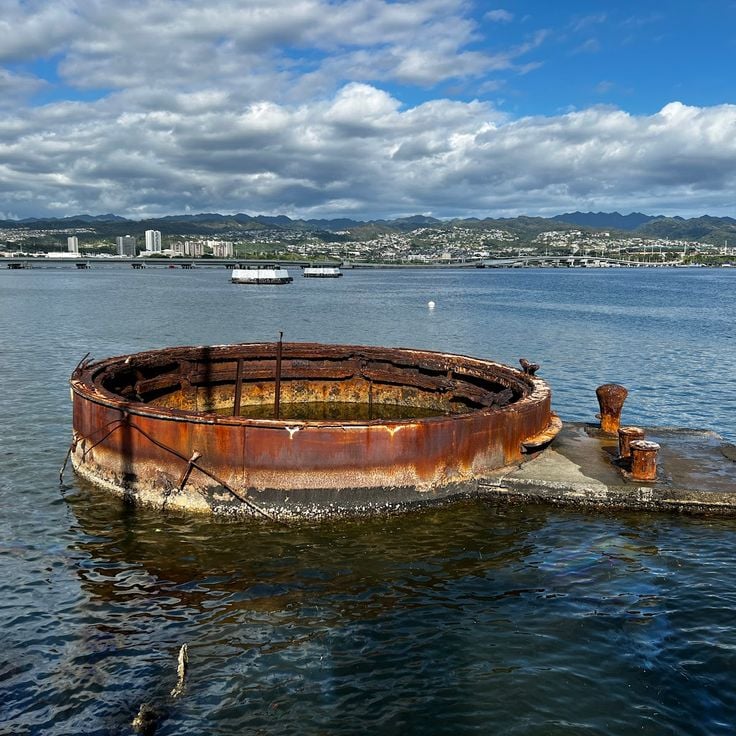The historic ships of the United States Navy are a direct testament to the country’s naval development throughout the 20th century. These warships, converted into museums accessible to the public, allow visitors to learn about life onboard and the technologies used during major global conflicts. The collections include Iowa-class battleships such as the USS New Jersey in Camden and the USS Wisconsin in Norfolk, destroyers like the USS Laffey in Mount Pleasant, as well as World War II submarines like the USS Cod in Cleveland and the USS Lionfish in Fall River. Visitors can walk the combat decks, examine original weapon systems, and explore preserved interior spaces. The USS Yorktown aircraft carrier at Patriots Point also displays vintage military aircraft, while the Naval Submarine Museum at Keyport features diving equipment and historical torpedoes. These sites, spread across oceans, provide a tangible view of the US Navy's role during Pacific conflicts, the Korean War, and more recent operations, showcasing nearly 80 years of maritime military history.
This warship was built in 1943 and measures 886 feet (270 meters) in length. The main deck carries nine 16-inch (406-millimeter) guns and features 12-inch (30-centimeter) thick armor plating. The USS New Jersey served in multiple conflicts and documents the development of American naval operations from the mid-20th century through decommissioning. The ship is permanently moored in Camden and provides visitors access to the bridge, engine rooms, and crew quarters.
This Iowa-class battleship was completed in 1944 and served in World War II, the Korean War, and the Gulf War. The ship carries a main battery of nine 16-inch (406-millimeter) guns mounted in three triple turrets and achieved a top speed exceeding 30 knots. After its active service period, the ship was decommissioned in 2000 and now operates as a museum vessel. Visitors can tour the bridge, officers' quarters, engine rooms, and gun turrets. The ship documents the technical development of American warships and their role in maritime conflicts of the 20th century.
This historic naval base displays the aircraft carrier USS Yorktown, the destroyer USS Laffey, and the submarine USS Clamagore. The facility presents military aircraft and naval equipment from different periods. The aircraft carrier spans 888 feet (270 meters) in length and served in World War II, the Korean War, and the Vietnam War. Visitors can explore the hangar deck, the bridge, crew quarters, and engine rooms. The collection includes over 25 aircraft, featuring fighter planes, helicopters, and reconnaissance aircraft displayed on the flight deck.
The Musée du cuirassé USS Iowa in Los Angeles preserves the last active Iowa-class battleship, commissioned in 1943 and serving the US Navy until 1990. This battleship participated in major operations across the Pacific during World War II, the Korean War, and the Cold War, carrying three American presidents and conducting diplomatic missions. The exhibits display the original 16-inch (40.6-centimeter) gun turrets, engine rooms, bridge, crew quarters, and officers' mess that document daily operations aboard a battleship. The museum presents military equipment, nautical instruments, historical photographs, and personal items from crew members across different eras. Visitors can walk through the armored decks, tour the command center, and trace the technical evolution of American naval forces from World War II through the end of the Cold War.
This museum occupies a Gato-class submarine that completed seven combat patrols in the Pacific during World War II. The USS Cod Submarine Memorial allows visitors to walk through all compartments of the submarine, including the torpedo rooms, crew quarters, control room, and engine rooms. The boat conducted several successful missions and rescued the crew of a Dutch submarine in 1945. The preserved original equipment demonstrates the technical features and living conditions of the crew during operations.
Seawolf Park in Galveston presents exhibits on American naval history. The USS Stewart, an Edsall-class destroyer from 1942, forms the centerpiece of the museum grounds. This ship features original navigation equipment, gun turrets, and crew quarters accessible to visitors. The park also displays the USS Cavalla, a Gato-class submarine from World War II. The exhibits document the service of these naval units in the Pacific theater and their technical development. The site on Pelican Island includes information panels about Galveston's shipyard history.
This Fletcher-class destroyer was built in 1943 and named after five brothers who died in the Pacific War. The ship served in the US Navy during World War II and the Korean War, participating in numerous operations. Since 1977, it has been moored as a museum ship at the Buffalo and Erie County Naval and Military Park. Visitors can tour the bridge, crew quarters, engine rooms, and weapons systems. The destroyer documents the technical development and daily life aboard American mid-sized warships during this era.
The Baylander Steel Beach served as a United States Navy training vessel between 1968 and 2011, functioning as a floating platform for helicopter pilots. This ship recorded over 120,000 landings during its service and documents the development of naval aviation during the second half of the 20th century. The Baylander provided aspiring pilots with training in takeoff and landing maneuvers under realistic conditions on a ship deck.
This US Navy submarine from World War II measures 312 feet (95 meters) in length and entered service in 1944. The vessel conducted patrols in the Pacific and belongs to the Balao class, known for its improved diving depth and maneuverability. The Lionfish is part of the historic naval vessel collection documenting the evolution of American maritime forces. Visitors can examine the original torpedo tubes, crew quarters, and command center. The submarine illustrates the technical challenges and living conditions faced by the crew during wartime operations.
This experimental submarine of the US Navy from 1953 tested innovative technologies for underwater vessels. Visitors can explore the crew quarters and technical equipment. The museum ship is located in Portsmouth's Memorial Park and demonstrates the development of submarine design in the postwar period.
The Bowfin Submarine Museum & Park displays a Second World War submarine with original equipment and technical systems. Visitors can tour the command deck, torpedo rooms, and crew quarters. The exhibits include torpedoes, navigation instruments, and underwater equipment that document the development of the American submarine fleet. The museum park is located in Pearl Harbor, a major naval base with several historic US Navy vessels.
The USS Missouri battleship served in the American Navy from 1944 to 1992 and now rests as a museum ship at Pearl Harbor. The Japanese surrender document ending World War II in the Pacific was signed aboard in 1945. This vessel carries nine 16-inch (406 mm) guns and numerous other weapon systems installed during various modernizations. The tour provides access to the bridge, engine rooms, and crew living quarters. This fleet veteran documents the technical development of American capital ships across five decades.
The Intrepid Sea, Air & Space Museum at Pier 86 in Manhattan features the USS Intrepid aircraft carrier, which served during World War II, the Cold War, and the Vietnam War. This facility complements the collection of historic US Navy warships by providing visitors access to military aircraft, the USS Growler ballistic missile submarine, and the Space Shuttle Enterprise. The ship's decks present original navigation systems, weapons configurations, and crew quarters spanning several decades. The museum documents technological developments in aviation and spaceflight alongside the operational history of this aircraft carrier during major military engagements of the 20th century.
This naval museum occupies the USS Midway aircraft carrier, which served for 47 years from 1945 to 1992 and participated in several conflicts including the Vietnam War and Operation Desert Storm. The carrier displays more than 30 restored military aircraft on the flight deck and in the hangars, including F-14 Tomcats, F-4 Phantoms, and A-6 Intruders. Visitors can walk through officer quarters, crew berthing areas, the engine room, and the bridge. Audio tours narrated by former crew members explain daily operations and aircraft maintenance procedures aboard the ship. This vessel is part of the collection of American warships that document the development of the US Navy throughout the 20th century.
This Essex-class aircraft carrier served between 1943 and 1970, participating in operations during World War II and the Vietnam War. The USS Hornet also supported the recovery of the Apollo 11 and Apollo 12 crews. Now a museum in Alameda, the ship displays combat aircraft from different periods, preserved hangar decks, and the command center. Exhibits document the development of naval aviation and the role of carrier groups in Pacific conflicts. This historic carrier adds to the collection of American military ships by representing carrier operations and space missions across several decades.
This battleship of the North Carolina class is moored on the Cape Fear River in Wilmington and serves as a museum ship. The USS North Carolina was commissioned in 1941 and participated in numerous Pacific operations during World War II, including engagements at Guadalcanal and the Marianas. Visitors can explore nine decks, view the main gun turrets with 16-inch (40.6-cm) cannons, and enter crew quarters, engine rooms, and the bridge. The ship earned 15 battle stars for its wartime service and represents the first generation of American fast battleships of the 20th century.
The USS Massachusetts is a South Dakota-class battleship now preserved at Battleship Cove in Fall River. This contribution to the collection of American naval ships displays a major combat unit of World War II that served in both the Atlantic and Pacific theaters. Aboard this vessel, visitors can tour the gun turrets with 16-inch (406-millimeter) main batteries, bridge spaces, and crew quarters. The ship participated in multiple operations including the North Africa landings and several Pacific engagements. Preserved technical installations document naval architecture of the 1940s and provide insight into the operation of a warship with a crew of over 2,000 during the global conflicts of the 20th century.
The USS Alabama is a South Dakota-class battleship serving as a museum ship in Mobile and part of this collection of historic naval vessels. This World War II veteran was commissioned in 1942 and participated in combat operations in both the Pacific and Atlantic theaters. Visitors can tour the command bridge, weapon systems featuring 16-inch (406-millimeter) guns, and crew quarters. The ship demonstrates the technical development of American battleships during the war and provides insight into daily life for its crew of more than 2,500 personnel. The vessel also displays historic aircraft and military equipment that document maritime warfare of the period.
This World War II Gato-class submarine at Battleship Memorial Park in Mobile documents the development of American undersea warfare during the Pacific campaign. USS Drum completed 13 combat patrols between 1942 and 1945, sinking 15 Japanese vessels. Visitors can walk through the narrow crew quarters, inspect the torpedo room with its original weaponry, and explore the command center where tactical decisions were made. The interior preserves the periscopes, navigation instruments, and communication equipment used during Pacific operations. This vessel complements the collection of historic naval ships by illustrating the technical challenges and living conditions faced by crews in World War II submarines.
This Balao-class submarine is docked at Pier 45 in Fisherman's Wharf and provides insight into undersea warfare during World War II. USS Pampanito completed six war patrols in the Pacific between 1944 and 1945, sinking several Japanese vessels. Visitors can tour the cramped crew quarters, the torpedo room with original Mark 14 torpedoes, the control room, and the engine room. The boat rescued 73 Allied prisoners of war from the water following the sinking of Japanese transport ships. As part of this collection of American warships, it documents the technical development and operational challenges of submarine warfare in the Pacific theater.
The USS Silversides Museum preserves an American Gato-class submarine from World War II and documents the development of US Navy submarine technology. This submarine completed 14 war patrols in the Pacific and sank 23 enemy vessels totaling 90,080 tons. Visitors can navigate through narrow passageways, examine the torpedo room, and understand the operation of periscopes and diesel engines. The exhibition includes original navigation instruments, radio equipment, and personal belongings of the crew. An additional Coast Guard cutter from the Prohibition era and maritime artifacts complement this collection of historic naval vessels and illustrate various aspects of American naval history throughout the 20th century.
The USS Texas is the sole surviving warship that served in both world wars, offering insight into United States naval development from the early to mid-20th century at La Porte. This New York-class battleship, commissioned in 1914, participated in the Normandy landings and Pacific operations. Visitors aboard can examine the 14-inch (356 mm) gun turrets, officer quarters, bridge, and engine rooms. The ship displays original equipment and weaponry from the dreadnought era and documents technological developments in armor plating and fire control systems across several decades.
This aircraft carrier at Patriots Point sits in the Cooper River in South Carolina. The vessel was commissioned in 1943 during World War II and participated in significant battles across the Pacific theater. As a museum, visitors can explore the hangar and flight decks, view a collection of military aircraft from different eras, and gain insights into daily operations aboard a warship. The USS Yorktown illustrates the evolution of naval technology from World War II through the Vietnam War, demonstrating the development of carrier-based aviation over several decades. The exhibits also include details on weaponry, navigation, and crew accommodations that document life at sea during active combat operations.
This Essex-class aircraft carrier, which served during World War II and later participated in operations in Korea and Vietnam, now houses an extensive collection of naval aircraft and exhibits related to American maritime military history. The USS Lexington in Corpus Christi allows visitors to explore the hangar deck, bridge, and engine rooms, while restored aircraft from different periods document the development of naval aviation. The crew quarters, operations rooms, and flight deck provide insights into the daily operations of a fleet carrier. As part of the American military ship museum collection, this carrier displays technical systems and military equipment from several decades of active service.
This Fletcher-class destroyer serves as a museum ship on the Mississippi River, presenting American naval technology from World War II. The USS Kidd provides visitors access to combat decks, engine rooms, and crew quarters that illustrate daily life aboard during Pacific operations. This warship belongs to a collection of historic US Navy vessels documenting various periods of American maritime military history from World War II through later operations. The exhibit includes original weapon systems, navigation instruments, and personal items from sailors. This destroyer complements the nationwide collection of battleships, submarines, and aircraft carriers open to the public.
This Fletcher-class destroyer, docked as a museum ship in Bremerton, served in the United States Navy during the Korean War and the early phases of the Vietnam War. The ship is named after Admiral Charles Turner Joy and participated in the 1964 Gulf of Tonkin Incident, an event that led to military escalation in Southeast Asia. Visitors can walk through the bridge, engine rooms, gun mounts with 5-inch (127 mm) guns, and crew quarters. The preserved spaces show daily life aboard and naval operations during the Cold War era. This destroyer complements the collection of American military ships, documenting the US Navy's role in the Pacific conflicts of the 1950s and 1960s.
The USS Blueback is a Barbel-class submarine on display at the Oregon Museum of Science and Industry (OMSI) in Portland. This diesel-electric submarine, commissioned in 1959 and operational until 1990, was the last conventionally powered submarine in the US Navy fleet. Visitors can explore the crew's cramped quarters, control room, and torpedo compartments to understand life aboard during the Cold War era. The exhibit documents technological developments in submarine construction and adds to the collection of historic naval vessels that illustrate the US Navy's role across several decades of maritime operations.
This Marlin-class submarine served in the United States Navy from 1953 to 1973 and contributes to the collection of historic warships that document the technological development of American naval forces. The USS Marlin operated during the Cold War and is now accessible as a museum ship in Freedom Park, Omaha. Visitors can explore the spaces where the crew lived and worked, as well as examine the original navigation and communication systems. The preserved interior provides insight into conditions aboard during 20th-century military operations.
The USS Razorback is a World War II submarine displayed at the Arkansas Inland Maritime Museum, part of the collection of historic United States Navy warships. This Balao-class submarine entered service in 1944 and conducted patrol missions in the Pacific before being transferred to the Turkish Navy during the Cold War. The submarine returned to the United States and now allows visitors to tour the torpedo rooms, control stations, and crew quarters. The exhibit presents the technical systems and living conditions of sailors during operations. The USS Razorback complements the collection of naval ship museums documenting nearly 80 years of maritime military history.
This Tench-class submarine entered service in 1944 and participated in war patrols in the Pacific. The USS Torsk is now permanently moored in Baltimore and allows visitors to explore the cramped quarters of an underwater warship crew. Torpedo tubes, sleeping berths, and control rooms remain preserved and provide insights into the daily challenges of submarine duty during the final months of World War II. As part of the collection of historic warships at the Inner Harbor, this vessel complements American naval history with technical details of undersea warfare and the living conditions of its 80-member crew.
The USS Ling on display in Hackensack is a Gato-class submarine from World War II and part of this collection of historic United States Navy warships. Visitors can explore the original torpedo tubes, engine rooms, and cramped crew quarters that illustrate life underwater during Pacific conflicts. This preserved submarine complements the collection of naval museums with technical exhibits and authentic onboard systems from the global conflict era.
The USS Requin (SS-481) is a Tench-class submarine commissioned in 1945 and now serving as a museum ship. This submarine, which operated during both World War II and the Cold War era, documents the technological development of the American submarine fleet. Visitors can explore the cramped crew quarters, control room, and torpedo rooms. The USS Requin was later converted to a radar picket submarine, demonstrating the modifications made to submarines during the postwar period. As part of this collection of historic naval vessels, this ship illustrates the role of the US Navy in underwater warfare and contributes to understanding nearly 80 years of maritime military history.
The USS Arizona Memorial honors those lost in the attack on Pearl Harbor on December 7, 1941. The monument sits above the sunken battleship USS Arizona in the waters off Oahu, Hawaii. Visitors can enter the white structure and look through windows at the wreck that still rests on the harbor floor today. The Memorial is part of this collection of military ships that tell the story of the US Navy throughout the 20th century. It documents a pivotal moment that brought America into World War II.
Similar collections
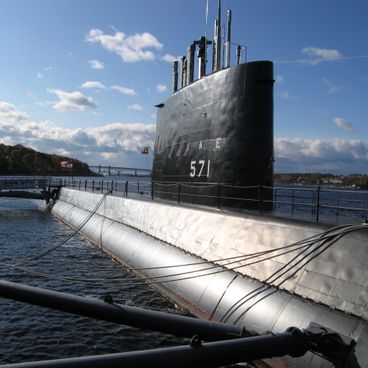
Submarines you can visit around the World
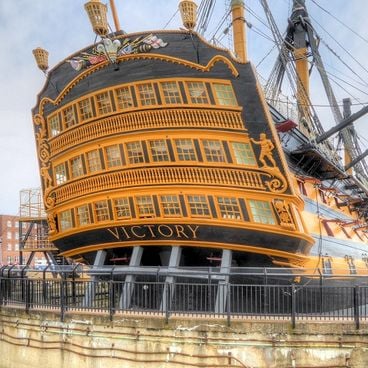
Historic naval ships: Museum vessels, floating memorials

Hidden New Jersey: historic mills, nature reserves and old villages

South Carolina history : plantations, Charleston, beaches

